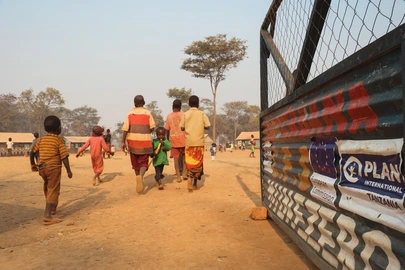Child Labor and the arrival of refugees
April 24, 2019.
About one million refugees moved to Tanzania between 1993 and 1998 due to the violent civil conflicts that raged in Burundi and Rwanda in 1993-1994 causing hundreds of thousands of casualties in just a few months. To develop appropriate policies to ensure children's human capital development and hence the future economic development of the recipient community, an understanding of the impairment of the young generation during and in the aftermath of a humanitarian crisis is essential.
Child labor is a main obstacle for human capital accumulation in Tanzania.
It leads to low school enrollment, because children who work have less time to attend class. So how does a large and unexpected influx of refugees affect children in host communities? A large influx of refugees can have an impact on the availability of infrastructure such as schools, on agricultural productivity and on household wealth which, in turn, has an impact on children's time allocation. We took a closer look at Kagera, an agricultural region in northwestern Tanzania bordering Rwanda and Burundi.
The findings suggest that in the short-run (1991-1994) the increase in the intensity of the refugee influx led to a higher number of unskilled workers. Because more people became available to cultivate land at cheaper wages this led to an immediate increase in household welfare. Higher agricultural productivity and aid provision for the refugee communities contributed to the reduction of child labor in the agricultural sector.
However the findings show the opposite effect ten years after the arrival of the refugees: household welfare decreased in the areas most affected by the refugee arrival and the incidence of child labor increased in the agricultural sector. An explanation for this result is that in areas of high refugee intensity the early increase in agricultural productivity could not compensate for the growing agricultural demand, resulting in a sharp increase in prices from 1991 to 2004 that left households worse off.
School enrollment was negatively affected in the short run. Evidence from the field suggests that some schools which hosted refugees were damaged. Furthermore, both children and parents decided not to go or send children to school as they had the alternative option to earn money in refugee camps by undertaking small tasks such as collection of firewood.
The study findings suggest that in rural areas where children are more involved in farm work, micro-finance programs or government interventions that aim to increase agricultural productivity are particularly important. They can prevent the involvement of children in work activities when household income drops making subsistence agriculture a priority. Moreover, when dealing with humanitarian crises such as the resettlement of war refugees in low-income areas, it is important to also attend to the needs of local communities who themselves face a short-term shock that untreated, might have lasting impacts.
Authors:
Chiara Kofol is a senior researcher at ZEF.
Maryam Naghs Nejad is a senior research associate at IZA.



